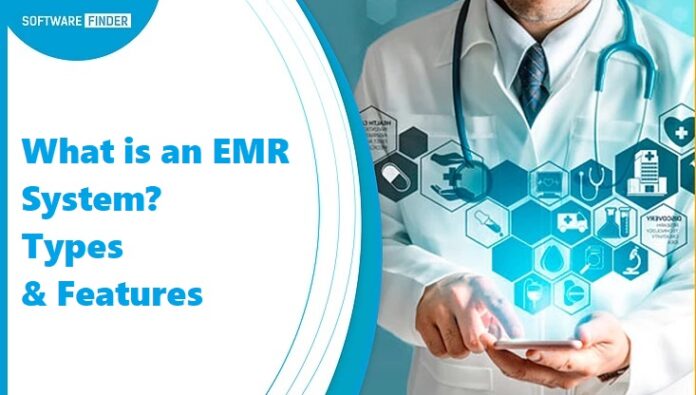
Electronic Medical Records
An Electronic Medical Records (EMR) documents, stores, and retrieves patient records from your server and eliminates the hundreds of manual files in your file cabinet.
EMRs make it easier for doctors, nurses, and patients to access information with ease. I know you might think that perhaps digital records aren’t as safe as manual ones, and you couldn’t be wrong. Since passwords and biometric scanners can be used to restrict access, records become more secure. Recent growth in the use of Electronic Medical Records (EMRs) has led to the development of services for transferring records from paper to digital files, which can be uploaded to an EMR system.
In general, EMR software records digital data that can be used to monitor and track patient health over time. Additionally, EMR systems offer the opportunity to review files remotely, including multiple people reviewing a chart simultaneously, so that handwriting or other confusions that may have occurred previously can no longer be a concern.
How Is This Different From an EHR?
Contrary to popular misconception, an electronic medical record (EMR) is not an electronic health record (EHR). Despite their similarity in uses and capabilities, the two systems are not exchangeable for the needs of physicians. An EHR focuses on the overall health of your patients. An EMR does not often keep the broader picture of a patient’s medical record.
If patients change hospitals, clinics, or physicians outside their current network, they cannot bring their EMR with them.
Medical offices can keep better and more secure records with the assistance of EMR systems. Electronic medical records, unlike EHR software, cannot be easily transferred. In comparison to more robust EHR software systems, an EMR comes with lower costs and fewer implementation challenges.
Choosing between an Electronic Medical Record and an Electronic Health Record depends on what functions are most useful to your hospital, office, or clinic.
Key Functions of EMRs
Doctors and clinicians have more ways to record and use patient information with electronic medical records. Health clinics and hospitals have better control of health data by replacing paper records with digital software.
EMR systems have several key features for both doctors and their patients.
Simplified Charting: Whenever a new diagnosis is made, the information is stored in a secure digital space. You don’t need to manage multiple charts from multiple patient visits. Plus, you can read digital records more accurately and clearly.
E-Prescribing: Most EMRs have e-prescribing functions, so pharmacies receive prescriptions more quickly than before. Using this feature, physicians can also receive notifications about drug interactions and dosage amounts.
Patient Portals: Medical information in EMRs is directly accessible by patients. Most effective EMR systems offer secure online access to a patient’s medical history, medications, lab results, and past hospital and clinic visits.
Decision Support: Patients can take advantage of the useful patient portal that is included in most EMRs, along with various functions that help patients take care of certain aspects of their healthcare. A patient is notified about upcoming treatments and recommendations for certain procedures, as well as reminders about scheduled treatments.
Order Entry: Electronic medical records help doctors store and distribute lab test orders. With EMR systems, the chances of order misplacement are reduced. Additionally, errors are filtered out of the system prior to becoming problematic. Healthcare organizations and patients save money and time in the long run if tests are not duplicated.
Benefits of EMRs
Healthcare providers can take advantage of many benefits provided by EMRs. Despite this list not being exhaustive, it provides an idea of how EMR software can improve patient care and records management.
Care Coordination: The EMR lets the providers track the patient’s progress from his or her first visit to the appointment. This picture is essential in the coordination of medication, treatment, and laboratory tests.
All medical records will be available for patients to access so that care can be coordinated with other clinics, if necessary.
Improved Patient Care: In contrast with paper records, doctors who use EMRs can view patient information in new and different ways. Patient health outcomes are expected to improve in the long term. Weight, cholesterol levels, blood pressure, and other health data can be used to draw useful charts through EMRs. The better information a physician gathers over time, the better able he or she is to screen for potential health issues or manage previous diagnoses.
Minimized Medical Errors: Patients and doctors can be assured that their information is the most current and accurate with the use of electronic records. Contrarily, paper records can become lost or unreadable, resulting in a misdiagnosis or wrong prescription.
Efficiency: Health-care facilities and clinics can operate more efficiently with EMRs. Administrative staff no longer have to file and store mountains of paperwork in safe and secured locations.
Using an EMR also prevents physicians from recommending unnecessary tests on their patients. Patients and providers save money and time because of this streamlining of information.
Types of EMR Software
Any hospital or medical care provider can readily adopt an electronic medical record. You can choose from an array of EMR systems options. EMR system selection ultimately depends on the individual needs and abilities of medical providers.
- Cloud-Based EMR Software
- Mac EMR Software
- ONC-Certified EMR Software
- Behavioral/Mental Health EMR Software
- Medical Billing Software
Conclusion
Healthcare is an ever-evolving technology industry. EMR systems represent a means to improve the quality of medical care for many physicians and healthcare providers. With EMRs, patients and doctors have easy access to all of your patient’s records.
Even though EHRs are to a greater extent extensive than electronic medical records, electronic medical records improve health outcomes for patients. Doctors also can monitor patients’ data over time and schedule preventative appointments, manage medical treatments, and keep tabs on chronic illnesses.










